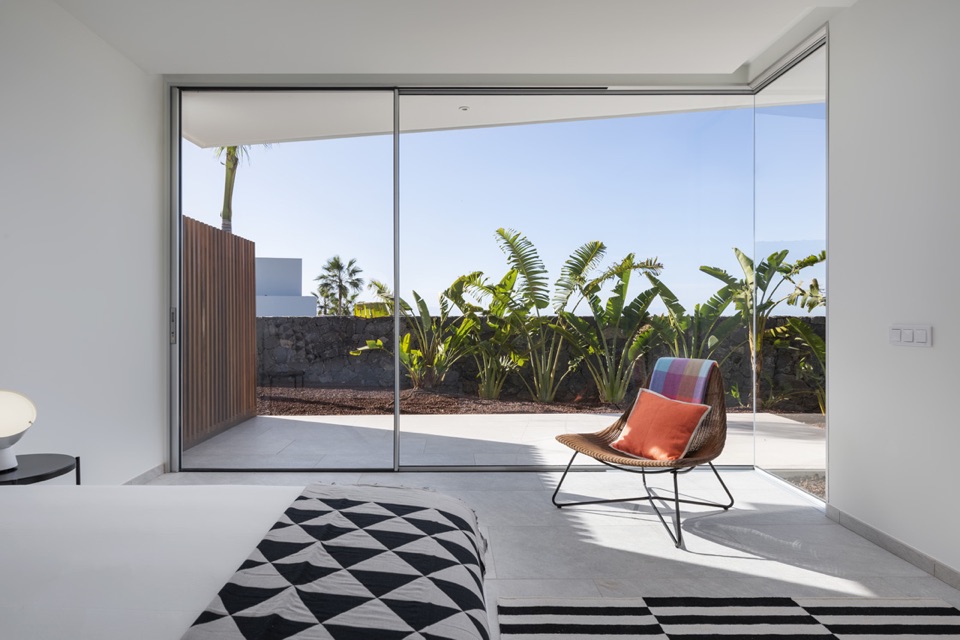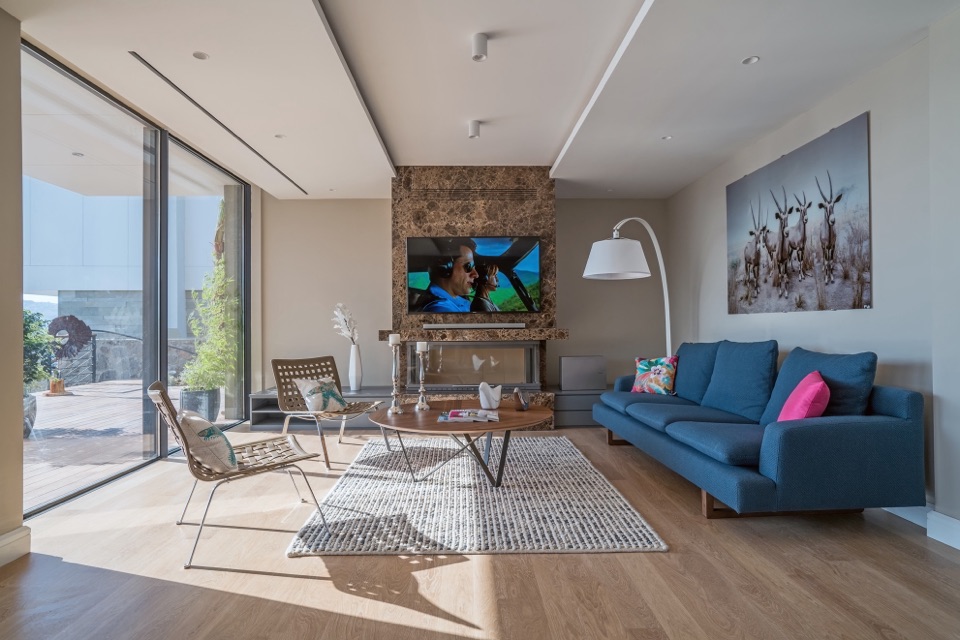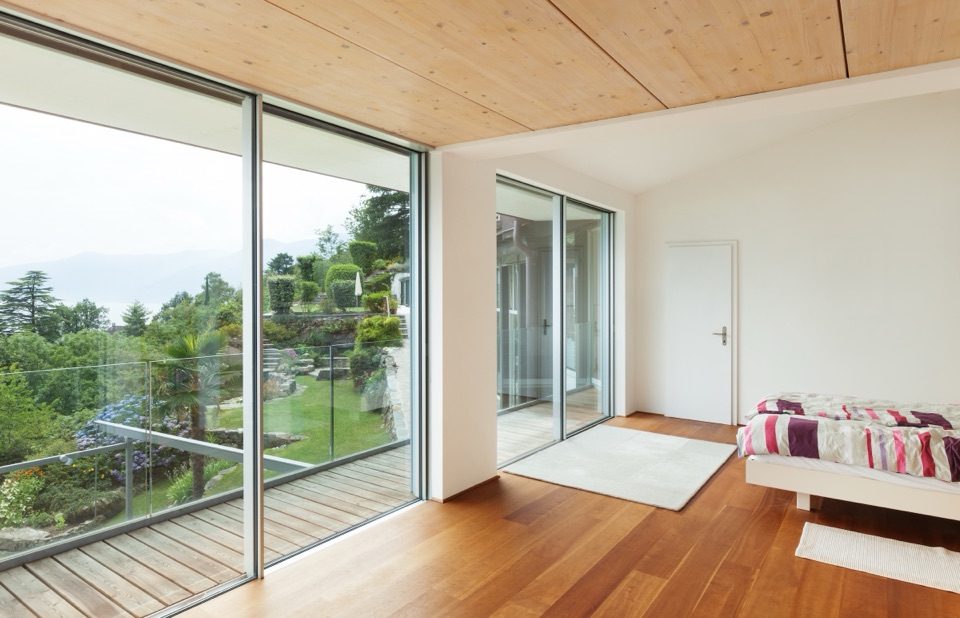How to Remove Condensation From Double Glazing
Have you noticed that your double glazed windows have condensation on the outside, inside, or between the two panes? This … Continued
Sliding doors remain one of the most popular and architecturally desirable glazing solutions. A sliding door is perfect for modern homes, extensions, and high-end renovations.
The immediate benefit of sliding doors is the largest possible panes of glass and fewer aluminium profiles, all while creating a connection between your room and your garden, patio or countryside.
But as with any architectural choice, there are trade-offs to consider and there are pros and cons to sliding doors. At Glideline, we manufacture everything from standard sliding doors to bespoke solutions for some of the UK’s most demanding architectural projects.
As a specialist manufacturer of high-performance sliding doors, we understand both the advantages and the practical realities. This article explores the pros and cons of sliding doors in real-world use, helping you make informed decisions for your next project.
Sliding doors are an ideal solution when your design brief calls for:
Larger panes of glass and uninterrupted views
Slimmer sightlines than traditional patio doors like French or Bifold Doors
Minimal impact on internal or external space as they slide on a track
Less movable parts like hinges and stresses on components when having hinged doors.
Whether you're replacing dated patio doors or designing from scratch, sliding doors are often the best option for maximising light, usability, and architectural appeal.
However, if we look more deeply at sliding doors, there are some practical benefits they don’t offer which may be important for your project.
|
| ||||||||||||||||||||
|
| ||||||||||||||||||||
Let us look at some of the pros and cons in more detail and how at Glideline we can help you get the best out your sliding doors. |
|

The ultra slim sightlines of our GS15 are the smallest in the UK with a mullion dimension of just 15mm. And these doors are suitable for replacing your dated doors and for a new extension.
Additionally, our GS20 is the most popular product but like other doors based on the Cortizo Cor-Vision system, ours offers flush stacking, improved hardware and other innovations the standard product does not provide from other manufacturers. Again, suitable for new build or replacement projects
The GS25 model is capable of the larges door sizes of 4m high or 5m wide and is suitable for new build openings only.
Unlike hinged or folding doors, sliding doors don’t swing in or out. The panels glide within their track, staying within the opening. This makes them ideal for patios, balconies, or rooms with furniture close to the doors. A Glideline door also provides the benefit of choosing which side you open first. Even on a two panel door, both can slide.
Modern systems like the GS25 can handle panels up to 4m wide and 4m high. With multi-track options, entire walls of glass become possible, with doors that are still easy to operate thanks to high-performance rollers and engineering.
Flush thresholds, hidden frame options, and minimalist sightlines allow sliding doors to blend into almost any architectural style. From Grand Designs-style homes to more classic extensions, they add a refined, modern look.
High-spec sliding doors are designed to handle severe weather conditions. With fewer moving parts and a continuous frame, they often outperform other glazed doors in terms of air permeability, water tightness, and thermal insulation—especially at large sizes. Even when you want an integrated or flush floor track, these come with full weather protection.
Well-engineered sliding doors glide smoothly and require minimal effort to open—even at panel weights over 300kg. With fewer hinges and components than folding doors, they can offer a longer service life with fewer wear points.

Even with triple tracks, sliding doors don’t offer a 100% open aperture. At best, you can expect up to 75% clear opening with specialist configurations. For most standard installations, only 50–66% of the overall width opens up.
When you choose the GS15 model for a standard opening, this model has thinner frames, so you get the most out of your available opening.
Larger panes mean heavier sashes. A single panel can exceed 400kg, requiring strong lintels, careful handling, and sometimes mechanical lifting. Site access and sub-floor integrity must also be considered early in the project. It’s very important to remember that the location affects your choice of door.
We help with all structural calculations, wind loadings and deflection measurements so you know your doors are the safest they can be. We don’t sell on sightline alone; we also sell of your doors being fit-for-purpose.
While you gain visual impact with larger sizes, costs rise with every extra metre. Larger glass, heavier frames, bespoke thresholds, specialist installation and transport can all impact the total price.
Choose the GS20 which is only available 30mm double glazed and this should keep the price and the overall weight down. At the same time, it meets building regulations U-Values, for new build or renovation projects.
Flush or level thresholds, while desirable for design and accessibility, require regular cleaning and maintenance to avoid debris build-up or drainage issues. A poorly maintained track can affect long-term usability.
The location of your doors and how often it’s used will usually determine how much debris you may get on a track.
Sliding doors follow a linear path. You can’t fold them open or swing a single door like a hinged or bifold door. While sliding functionality is smooth, you must always slide an entire panel for access—unless you configure a dedicated access leaf.
The flush stacking system of our GS15 and GS20 maximises the available opening.
Some people report that structurally bonded doors offer the slimmest sightlines but replacing damaged glass or servicing internal seals often means significant cost and disruption. At Glideline, we keep every single detail of your door on record. From glass size and type to the exact sizes and colour reference and every component used.
So where other door providers making beaded doors may frighten you into thinking you will be left with hole in your wall whilst your door is away for repair, our installers will turn up with a brand new sliding panel that will be fitted in around half a day to one full day.
This is less of a concern with beaded doors like the GS47, which even out of warranty any competent glazier can work on.

Everyday use matters just as much as the visual effect. Here are practical points that often come up during specification:
Child and Elderly Use: Heavy panels, while smooth on rollers, still require some initial force. Consider larger pull handles instead of flush to make opening easier. Assisted opening or automated options for accessibility are also available with the GS25 model.
Cleaning Large Glass Areas: More glass = more cleaning. Outside access may be required for first floor installations or where doors sit behind balustrades.
Consider how you will use your room where you are having fixed door panels.
Glare and Solar Gain: South facing elevations benefit from solar control glazing, especially when using large panels. Talk to us about Solar Control Glass and other shading solutions.
Planning and Regulations: Wide span openings should always involve your door manufacturer and a structural engineer, especially for new build or open corner configurations and where doors are in high level of very exposed locations such as coastal.
You want the slimmest sightlines possible
You have a home enjoying great views or a larger garden.
Your room layout doesn’t allow for folding or swinging doors
You're building a large, open plan space
You want a contemporary feel with strong architectural presence
At Glideline, we manufacture all our sliding doors in, house using the finest aluminium systems available. Many of our profiles, such as GS20 and GS25, are based on or extruded by Cortizo, giving you the performance and design capabilities of one of Europe’s best-known aluminium system suppliers. All are made here in the UK, supported by trade and homeowner expertise.
Our GS15, GS20, GS25 and GS47 sliding doors offer solutions for every scenario. From ultra-slim refurbishment projects to new-build installations requiring large scale glazing. Each is engineered for durability, precision, and effortless operation.
Sliding doors offer many architectural and lifestyle benefits. However, they’re not without considerations.
Getting them to your home, fitting them and servicing and repair are always more complicated on larger glazed product and especially any made around the glass like a bonded system. However, only when buying sliding doors from a specialist manufacturer who supports their installation partners do you get long term peace of mind.
We recommend avoiding buying sliding doors from the DIY route or getting your builder to fit them. Whilst costs may be lower, your warranty is reduced, and you risk problems. Sliding doors are precision made products and need absolute precision in manufacturing and a 100% professional installation.
Take a look at our case studies showing how our sliding doors have provided the perfect solution for our clients.
The Aldersrook Enclave in London
The Rectory in Lincolnshire
Speak to us regarding your project and how our door collection takes the headache out of the many pros and cons of sliding doors. speaking to an expert manufacturer or installer early in your project to ensure structural, aesthetic and practical requirements are fully met.
Contact Glideline today for expert guidance, technical support, or to explore our trade-approved sliding door systems in detail.
Have you noticed that your double glazed windows have condensation on the outside, inside, or between the two panes? This … Continued
Sliding doors have become an increasingly popular option in modern design due to their sleek and minimalistic look, as well … Continued
Double glazing can be the perfect way to help homeowners reduce energy bills due to the high thermal insulation efficiency … Continued